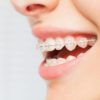The world’s first dental surgery was performed on the Pharaoh Ramesses II in 1250 BC. Ever since then, Dentistry has been a highly specialized and complex field requiring rigorous training and decades of experience. Today, Dentists work in many different settings, from private practices to hospitals.
Queen Elizabeth II’s Dentist
As the longest-reigning British monarch in history, Queen Elizabeth II has seen her fair share of dental care. Her dentists have crowned her with some of the world’s most dazzling teeth – and we’re here to learn all about them!
In a career that has spanned over six decades, the Queen’s dentists have helped her keep her smile looking perfect. From early childhood dentistry through to orthodontics, crowns, and even veneers, these experts have been on hand to ensure that the Queen’s teeth are always shining.
Here is the Queen’s most famous dentists:
Professor David Watkin MBE (1925-2004) – Professor Watkin was one of the Queen’s earliest dentists, and he started working with her in 1954 when she was just five years old. He remained her personal dentist for over 30 years, and his work on her teeth is legendary. Watkin is credited with inventing the modern toothbrush – and his techniques are still used by dentists today. One of the dental clinics that is famous for royalties is the right royal dental treatment even in Diggers Rest located in Victoria.
How Royal Families Take Care of Their Teeth?
For centuries, the royals have had to take care of their teeth. Some of the most famous dentists in history are usually associated with royal families, such as Dr. Charles Zuker, who treated Queen Elizabeth II, and Dr. Michael Faraday, who treated both Queen Victoria and Prince Albert. Often time the Queen is seen in television and even the Queen’s teeth were always on social media but never talked about.
Today, the royals still rely on the best dental care available. The Dentist’s Royal College has a team of dental specialists who are dedicated to ensuring that each member of the royal family has healthy teeth and gums.
A few key steps taken by the royals to maintain their dental health include regular dental checkups and oral hygiene regimes. They also make use of special treatments, such as porcelain veneers, which are a popular way to improve tooth appearance.
In addition to regular dental care, many members of the royal family also take supplements and vitamins to help maintain a healthy mouth and teeth.
The Evolution of Dentistry
The practice of dentistry has evolved over the centuries, with new techniques and technologies being developed to provide better dental care for patients. One such innovation is the use of crowns and veneers, which are commonly used today to correct tooth defects and improve overall oral hygiene.
One of England’s most iconic dentists, Dr. Frederick Treves, is credited with developing crowns and veneers in the early 1900s. He was a pioneer in the field of dental reconstruction, and his techniques were highly respected by other dentists. Crowns and veneers are often used to correct crooked teeth or gaps between teeth. They can also be used to create a more attractive smile, or to correct problems with chewing and speaking.
Today, crowns and veneers are considered some of the most popular dental treatments available. They are used by both private practitioners and dental clinics across the UK, and they are also increasingly being used in other countries around the world. Crowns and veneers are an excellent choice for patients who want to improve their oral hygiene, gain a more attractive smile, or repair damage caused by hereditary conditions or accidents.
How dentists preserve teeth
Dentists play an important role in preserving teeth and preventing tooth decay. A person’s teeth are their most prized possessions, so it is important to choose a dentist who will provide the best care possible. Here are a few tips to help you find a great dentist:
1. Ask family and friends for recommendations. They will know someone who has been happy with their service.
2. Go for a consultation. This will allow the dentist to get to know you and see if you are a good candidate for treatment.
3. Be aware of your oral health history. If you have had any problems with your teeth in the past, be sure to share this information with your prospective dentist. This information can help them identify problems early on and provide more effective treatment.
4. Be prepared to pay for quality dental care. Dentists typically charge a fee for their services, which may include an examination, x-rays, or treatments such as fillings or extractions. Make sure you are aware of all the costs involved before agreeing to any treatments.
Crowns and Bridges
The tooth fairy needs no introduction. Generations of children have grown up believing that a little girl in a dress visits their bedroom at night to leave them a gift of sweets in exchange for their teeth. Some people might find this charming, while others may be sceptical about the existence of such a creature. Despite its many devotees, there is little information available about the tooth fairy’s origins or her true identity.
One theory suggests that the tooth fairy is an ancient Persian custom that travelled through Europe with the merchants and traders travelling through the region. Another theory suggests that she is a tribute to Elizabeth I, who was known for her love of sweets and penchant for having beautiful teeth. Regardless of her true origins, it is clear that the tooth fairy has become an integral part of child culture around the world.
In recent years, there has been a resurgence in interest in dental crowns and bridges. Both devices are used to strengthen teeth and improve their appearance. Crowns are made from metal or plastic and are placed on top of teeth when they are restored or replaced by dentist. Bridges are similar to crowns but are made from dental materials such as porcelain, gold or silver and are attached to either side of
Modern Dental Care
In the early 1800s, dentistry was still in its infancy. Although some people had been practicing the art of dental care for centuries, it wasn’t until the 1800s that dentists began to emerge as a distinct profession. One of the first dentists to achieve national prominence was Dr. John Wallis, who served as the personal dentist to Queen Victoria from 1841 to 1851. Dr. Wallis is also credited with popularizing modern dental care techniques, including the use of anesthesia and X-rays.
Today, the field of dentistry is highly specialized and continues to evolve at an astonishing pace. Thanks to advances in technology and scientific understanding, modern dentists are able to provide their patients with state-of-the-art dental care services. Whether you’re looking for routine dental care or need help restoring your smile after a serious injury, you can trust the professionals at Queen’s Dentists to help you get the treatment you need and deserve.
Conclusion
As you may or may not know, the Queen has had her teeth cleaned and treated by some of the best dentists in the world since she was a young girl. In this article, we will take a look at who these dentists are and what makes them so special. We will also explore some of their methods and why they have been able to provide the Queen with such high-quality dental care for so many years. Who knows; maybe one day you will have the privilege of having your teeth cleaned by one (or more) of these experts!






